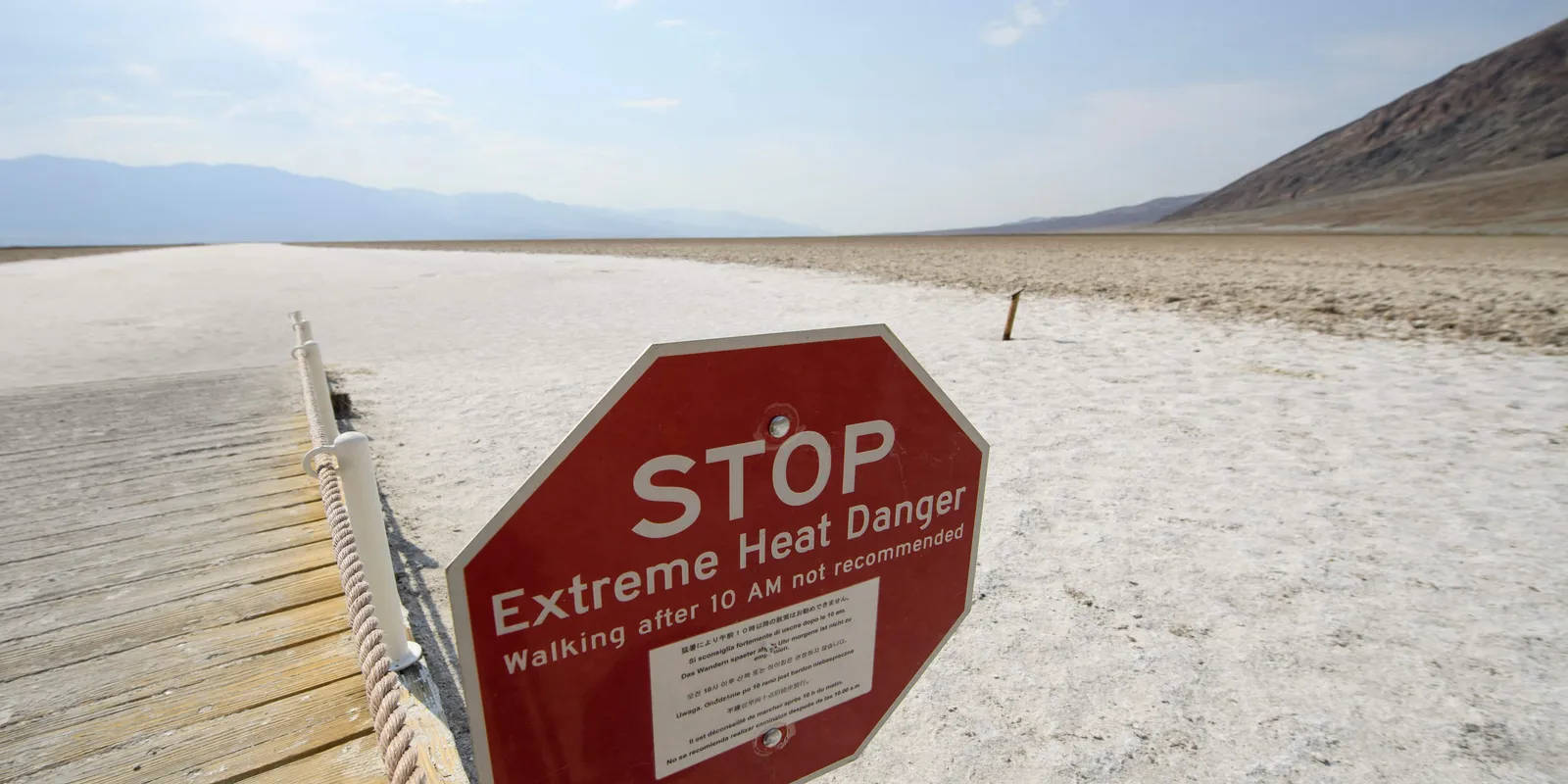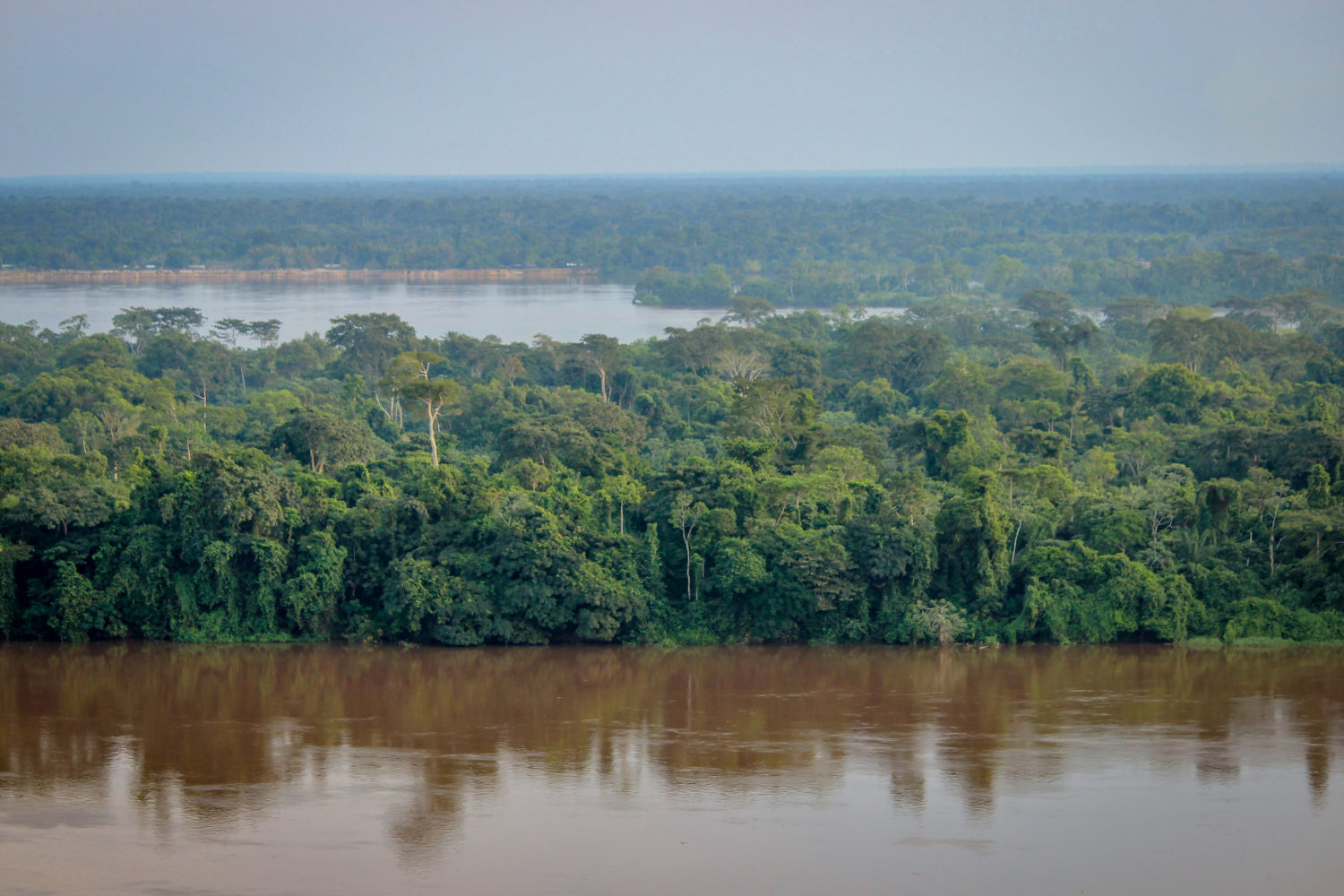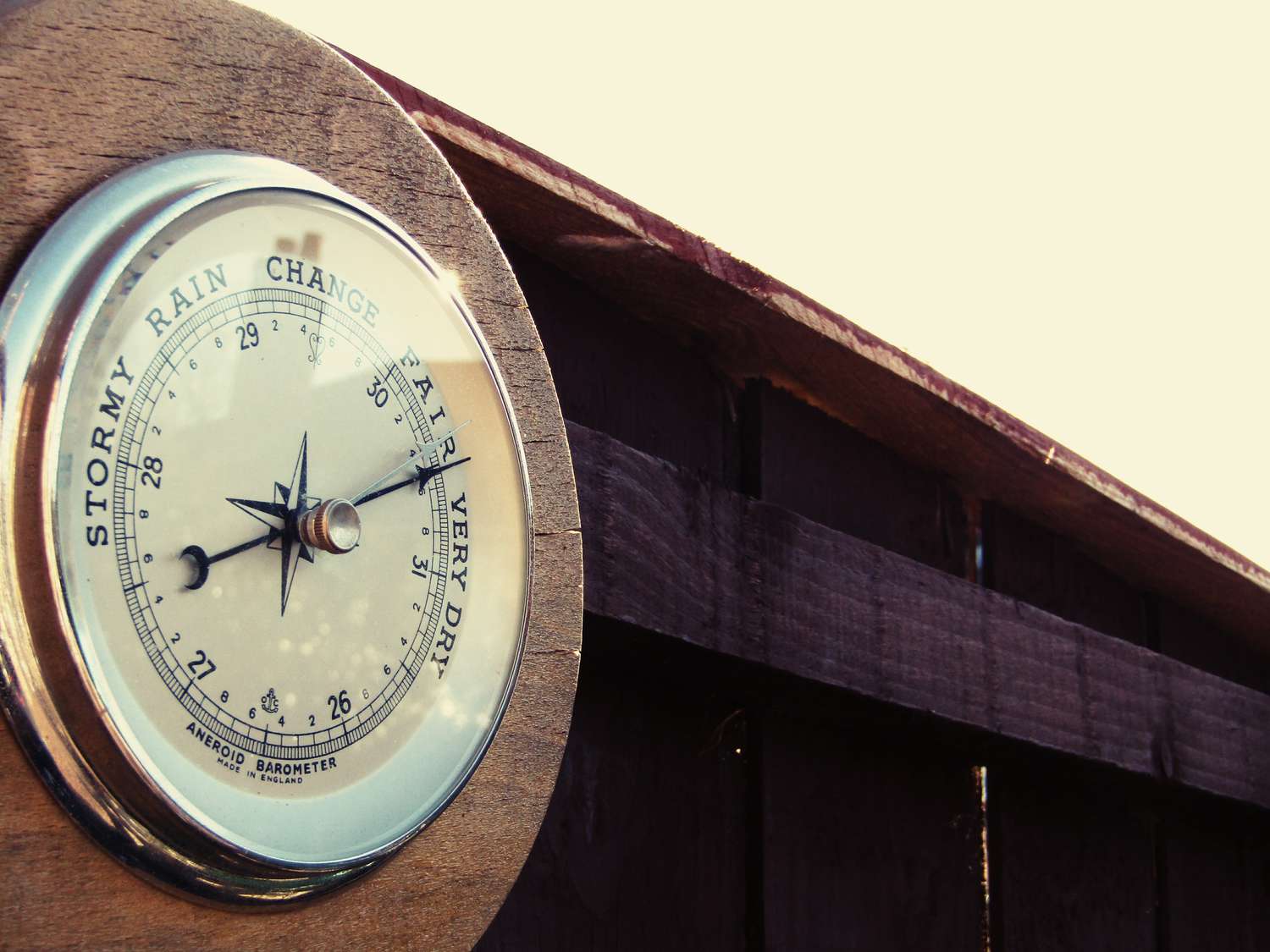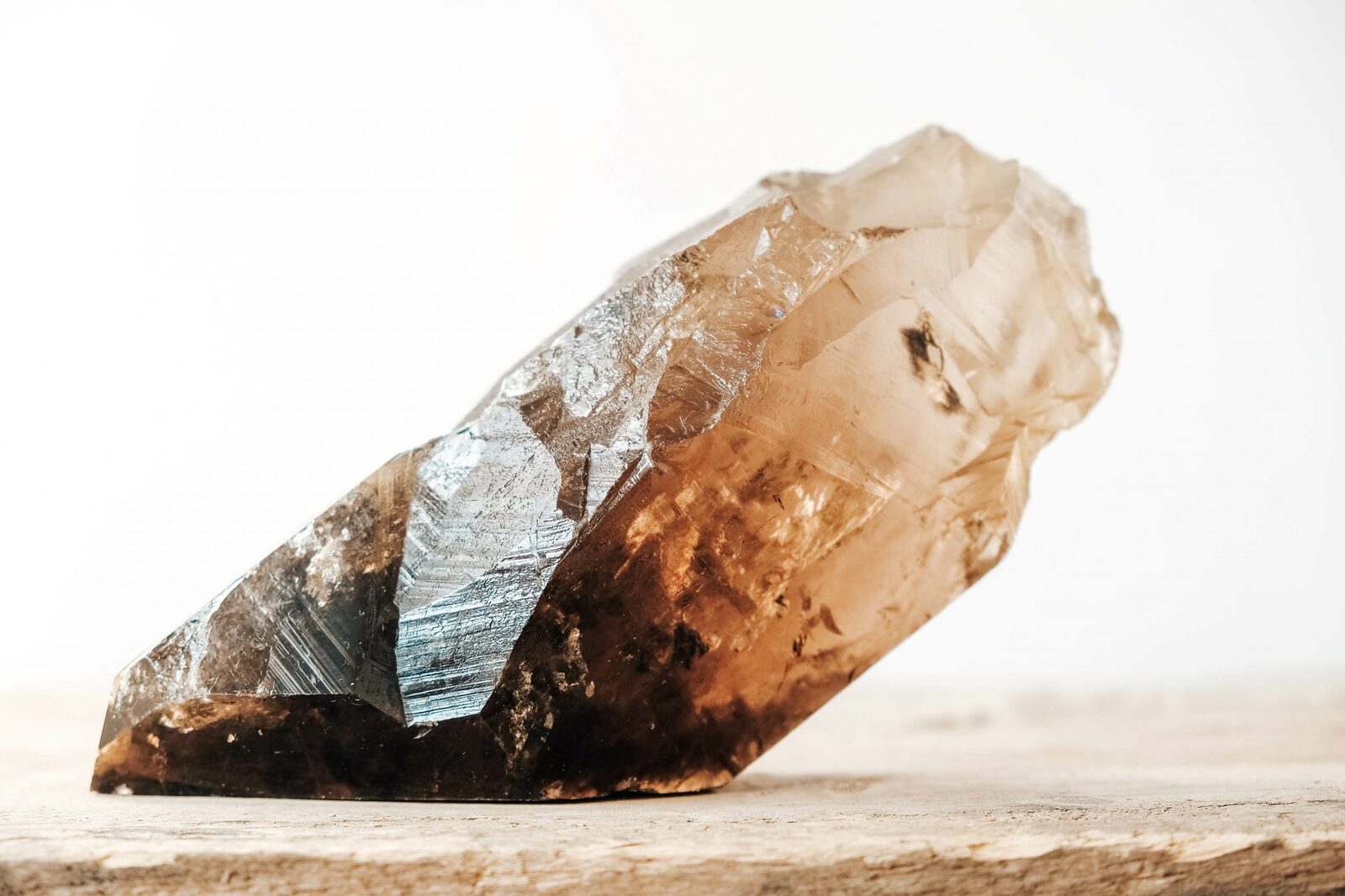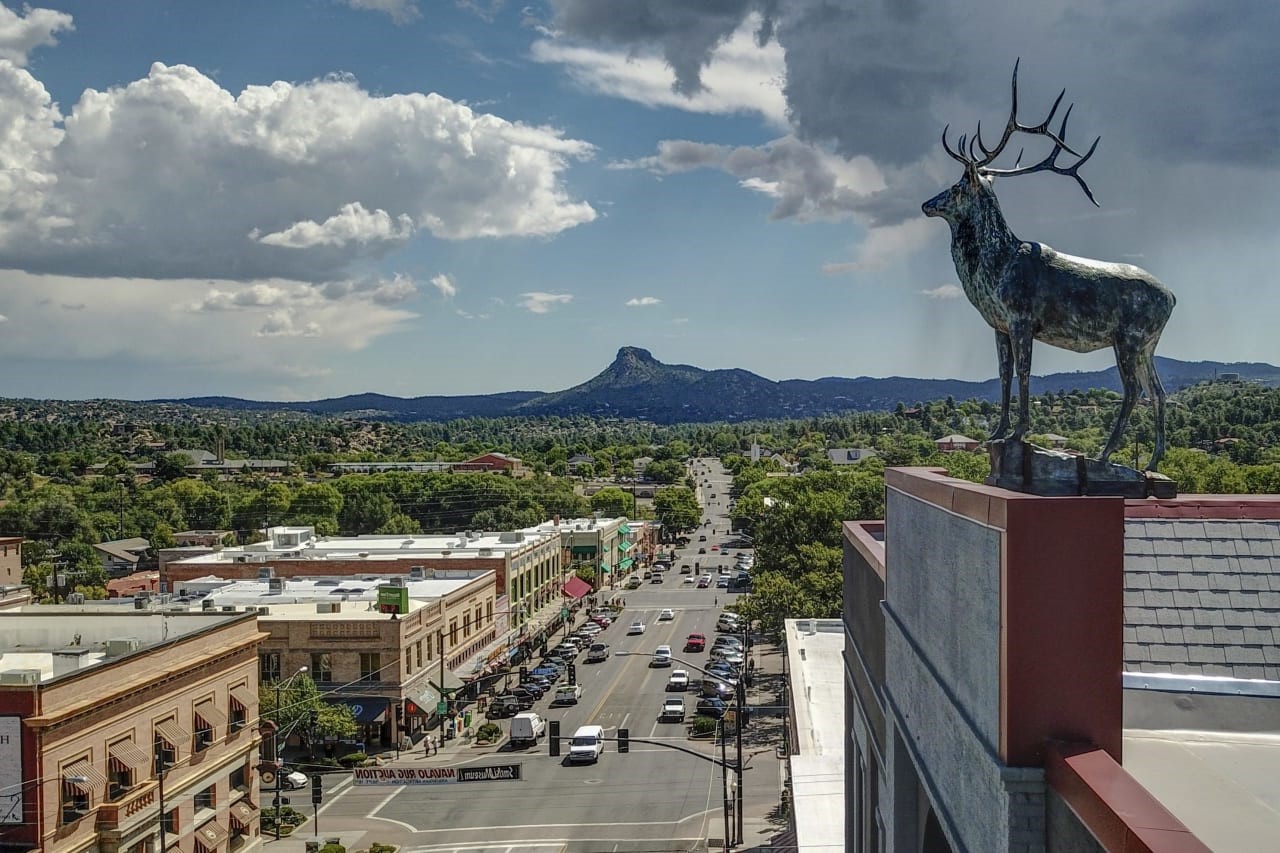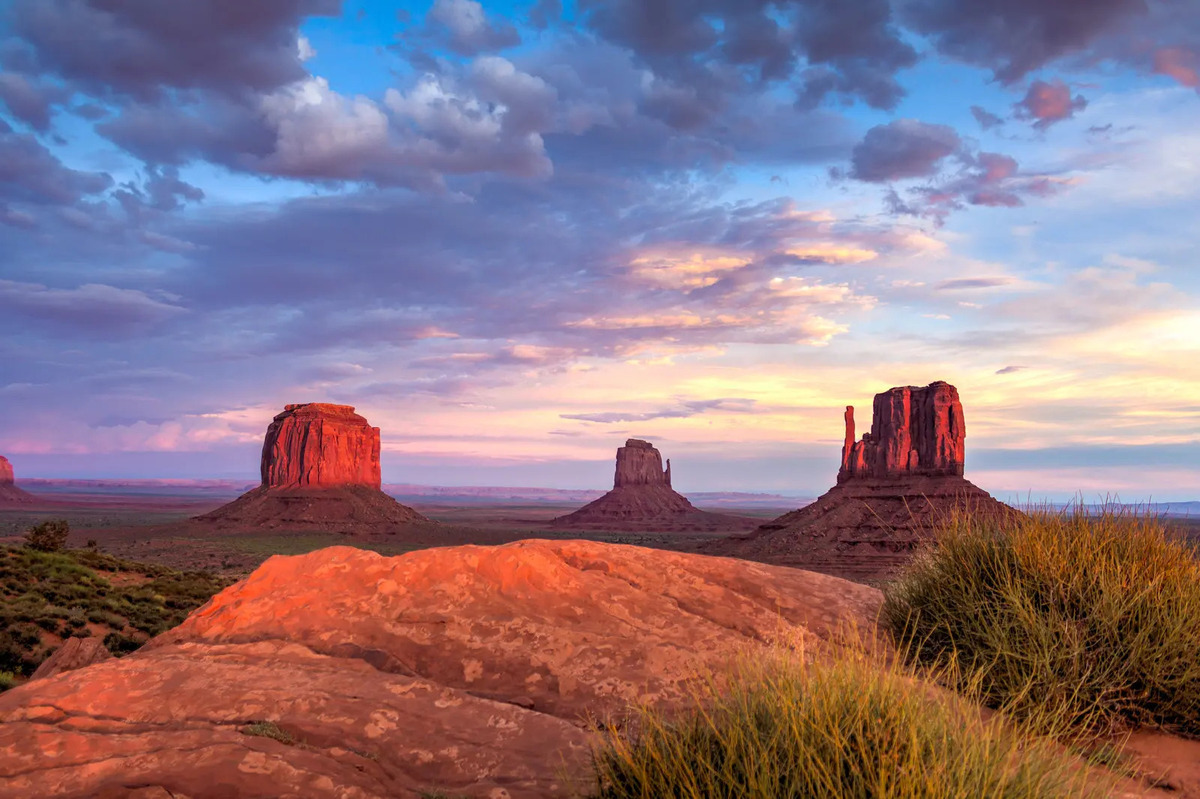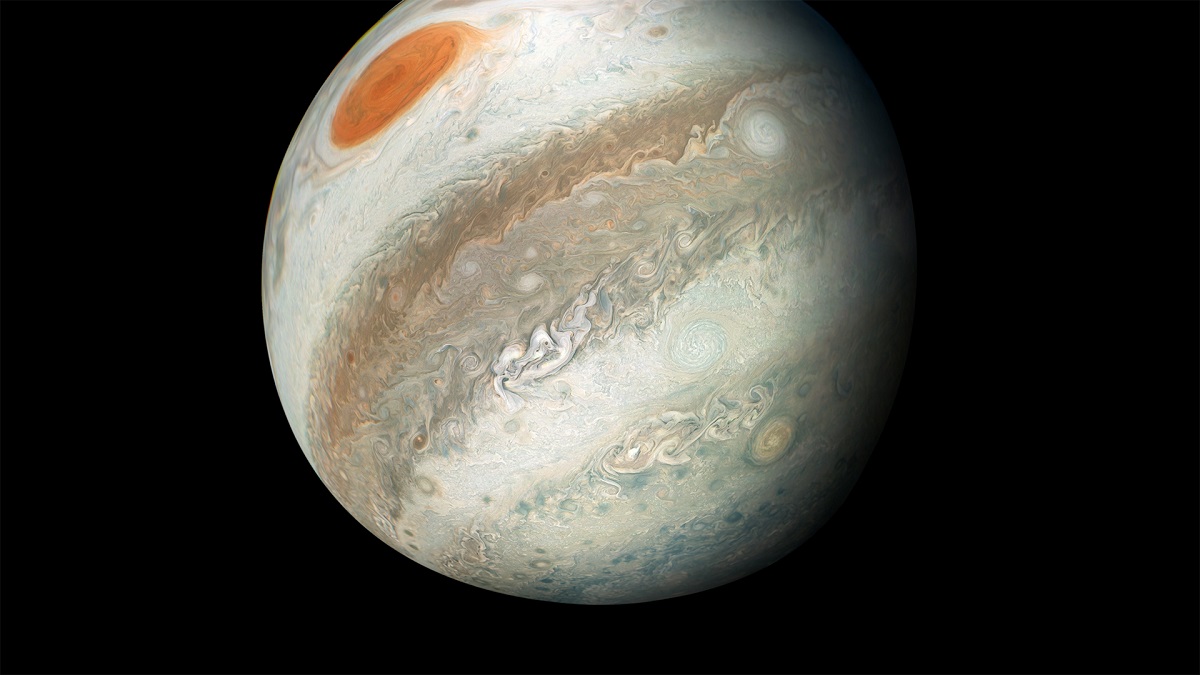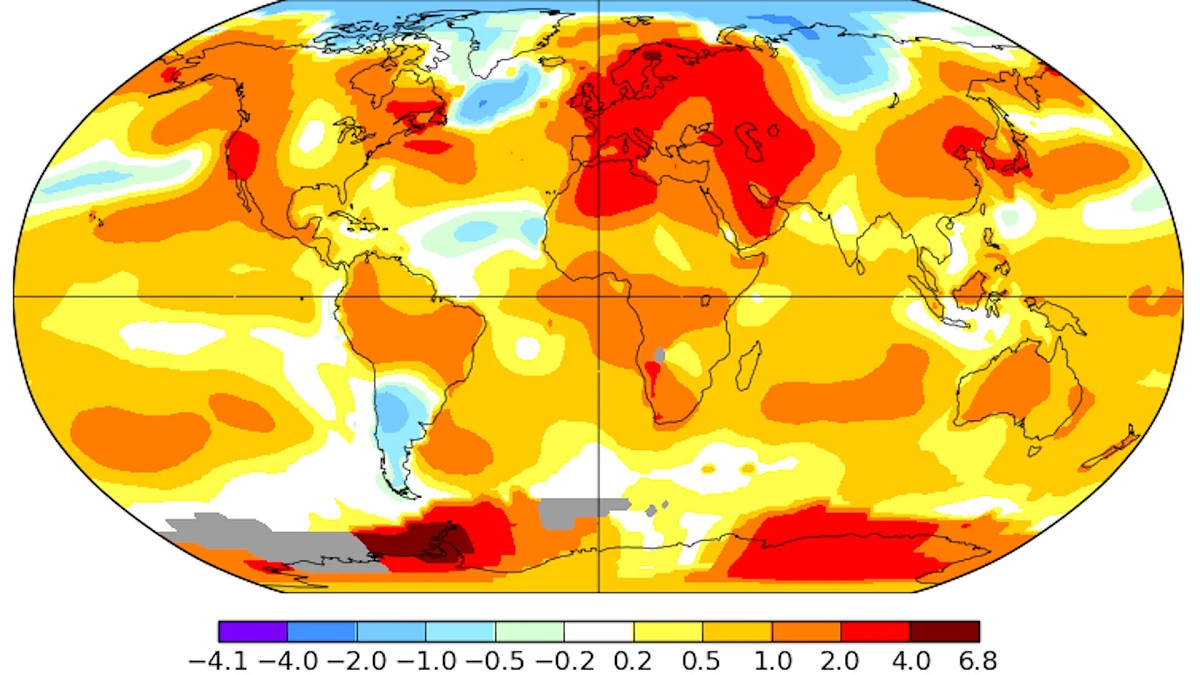Home>Weather and Climate>Death Valley Temperature: Exploring The Extreme Heat Of Death Valley
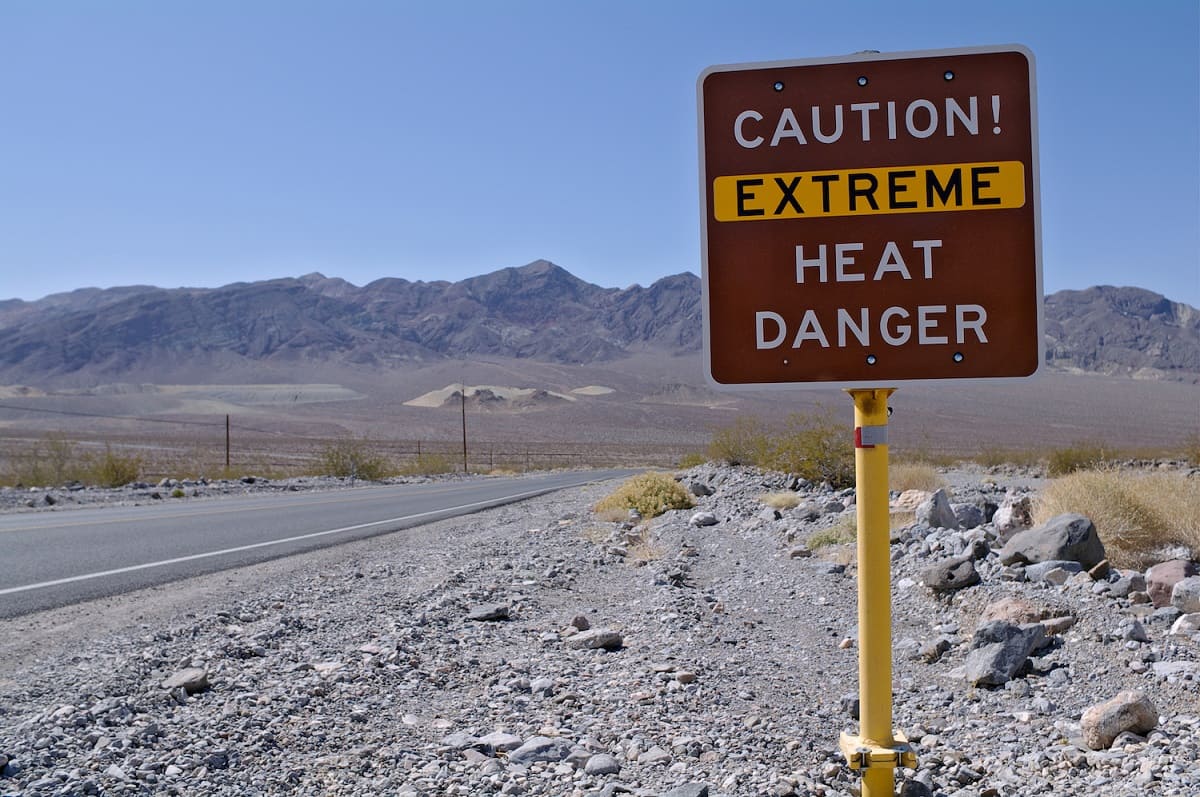

Weather and Climate
Death Valley Temperature: Exploring The Extreme Heat Of Death Valley
Modified: June 2, 2024
Discover the extreme heat of Death Valley with our in-depth look at the weather and climate. Learn about the record-breaking temperatures and unique climate conditions. Explore Death Valley's fascinating weather patterns today!
(Many of the links in this article redirect to a specific reviewed product. Your purchase of these products through affiliate links helps to generate commission for Temperatures.com, at no extra cost. Learn more)
Table of Contents
Introduction
Welcome to Death Valley, a land of extremes where scorching temperatures and arid landscapes define one of the hottest places on Earth. This unique region, nestled within the Mojave Desert of California, holds the record for the highest reliably reported air temperature on the planet. As we delve into the fascinating world of Death Valley, we will uncover the geographical features, climate patterns, and the profound impact of extreme heat on both the environment and human life.
In this article, we will embark on a journey to understand the unparalleled heat that blankets Death Valley, exploring the factors that contribute to its extreme temperatures and the implications for life in this unforgiving environment. From the blistering heat waves to the resilient flora and fauna that have adapted to thrive in these harsh conditions, we will unravel the intricate tapestry of life in one of the most inhospitable yet awe-inspiring landscapes on Earth.
Join us as we delve into the heart of Death Valley, where the relentless sun beats down on the rugged terrain, shaping an environment that challenges our perceptions of what life can endure. Through this exploration, we aim to gain a deeper appreciation for the resilience of nature and the remarkable adaptations that enable life to persist in the face of extreme adversity. Let's embark on this journey to uncover the secrets of Death Valley's scorching temperatures and the profound impact they have on the natural world and those who dare to venture into this land of extremes.
Read more: Monthly Temperature Guide for Death Valley
The Geography of Death Valley
Nestled within the expansive Mojave Desert of California, Death Valley stands as a testament to the raw power of nature and the remarkable geological forces that have shaped its otherworldly landscape. Spanning approximately 3,000 square miles, this arid expanse is renowned as the lowest, hottest, and driest place in North America. Its unique topography encompasses a diverse range of geological features, from salt flats and sand dunes to rugged mountains and deep canyons, creating a mesmerizing tapestry of contrasting terrains.
At the heart of Death Valley lies Badwater Basin, the lowest point in North America, with an elevation of 282 feet below sea level. This surreal salt flat stretches for miles, glistening under the relentless sun and serving as a striking emblem of the valley's extreme nature. Towering above the basin, the Panamint Range and the Amargosa Range form a dramatic backdrop, with Telescope Peak rising to over 11,000 feet, creating a stark contrast to the low-lying basin.
The valley's geological history is a chronicle of tumultuous forces, with the earth's crust being stretched and fractured, giving rise to the towering peaks and deep valleys that define the region. The erosive power of water and wind has sculpted the landscape over millions of years, leaving behind a mosaic of geological wonders that captivate the imagination.
The mesmerizing Mesquite Flat Sand Dunes, with their undulating waves of golden sand, stand as a testament to the ceaseless dance between the elements, while the rugged canyons, such as Golden Canyon and Mosaic Canyon, bear the marks of ancient torrents that carved their paths through the rocky terrain.
As we traverse the diverse terrain of Death Valley, we encounter a myriad of geological marvels, from the colorful badlands of Artist's Palette to the surreal formations of Devil's Golf Course, each bearing the indelible imprint of the valley's tumultuous geological history.
In the next section, we will delve into the unique climate of Death Valley, exploring the factors that contribute to its scorching temperatures and arid conditions, and the profound impact of these extreme climatic patterns on the region's ecosystem and inhabitants. Join us as we unravel the mysteries of Death Valley's climate and the remarkable adaptations that enable life to endure in this land of extremes.
The Climate of Death Valley
The climate of Death Valley is characterized by extreme aridity and scorching temperatures, making it one of the most inhospitable environments on Earth. This unique region experiences a desert climate, with minimal precipitation and relentless sunshine dominating the landscape throughout the year. The interplay of geographical features, atmospheric conditions, and the valley's topography contributes to the creation of an environment that challenges the limits of human endurance.
During the summer months, Death Valley is engulfed by blistering heat, with temperatures often soaring well above 100°F (37.8°C) and frequently exceeding 120°F (48.9°C). The valley holds the record for the highest temperature ever reliably recorded on Earth, with a staggering 134°F (56.7°C) measured in July 1913 at Furnace Creek. This unparalleled heat is a result of several factors, including the valley's below-sea-level elevation, which allows the air to heat up rapidly, and the surrounding mountain ranges that trap and intensify the heat, creating a natural oven effect.
In contrast, the winter months bring cooler temperatures, with daytime highs ranging from 60°F to 70°F (15.6°C to 21.1°C), offering a brief respite from the searing summer heat. However, even during the winter, nighttime temperatures can plummet, reminding visitors of the valley's capacity for extreme temperature differentials. The annual precipitation in Death Valley is exceedingly low, averaging around 2 inches (50 mm) or less, with the rare occurrence of intense, localized thunderstorms that bring short-lived but intense downpours.
The relentless sunshine that bathes Death Valley contributes to its arid conditions, with evaporation rates often surpassing precipitation levels. This results in the formation of vast salt flats, such as those found in Badwater Basin, where the evaporated water leaves behind a crystalline expanse, bearing witness to the valley's extreme aridity.
The unique climate of Death Valley has shaped a resilient ecosystem, where only the most tenacious plant and animal species have adapted to survive in this harsh environment. From the iconic Joshua trees and creosote bushes to the elusive desert pupfish, the flora and fauna of Death Valley have evolved remarkable adaptations to thrive in the face of relentless heat and scarce water resources.
As we unravel the intricacies of Death Valley's climate, we gain a deeper appreciation for the remarkable resilience of life in the most extreme of environments. In the next section, we will delve into the impact of these extreme temperatures on the region's ecosystem and the adaptations that enable life to endure in this land of extremes. Join us as we uncover the profound implications of Death Valley's climate on the natural world and those who call this unforgiving landscape home.
The Hottest Temperatures Recorded in Death Valley
Death Valley holds the distinction of being the site of the highest reliably recorded air temperature on Earth. The scorching heat that envelops this unforgiving landscape has shattered records and tested the limits of human endurance. In July 1913, a staggering temperature of 134°F (56.7°C) was measured at Furnace Creek, marking the apex of Death Valley's relentless summer heat. This extraordinary record stands as a testament to the valley's capacity to reach unparalleled temperatures, solidifying its status as one of the hottest places on the planet.
The factors contributing to Death Valley's extreme temperatures are multifaceted. The valley's unique topography, characterized by its below-sea-level elevation, plays a pivotal role in amplifying the heat. As the sun's rays beat down on the valley floor, the air heats up rapidly, creating a convection oven effect that intensifies the already blistering temperatures. Additionally, the surrounding mountain ranges, including the Panamint Range and the Amargosa Range, act as natural barriers, trapping the heat and further exacerbating the valley's scorching conditions.
The relentless nature of Death Valley's heat is not confined to isolated incidents. Instead, it is a recurring phenomenon, with temperatures frequently exceeding 120°F (48.9°C) during the peak of summer. This sustained, searing heat poses significant challenges to both the region's ecosystem and those who dare to venture into this land of extremes.
The impact of these extreme temperatures extends beyond the realm of records and statistics, shaping the very fabric of life in Death Valley. The flora and fauna that call this arid expanse home have evolved remarkable adaptations to survive in the face of such relentless heat. From the resilient creosote bushes and iconic Joshua trees to the elusive desert pupfish, the inhabitants of Death Valley have developed extraordinary strategies to endure the harsh realities of their environment.
As we contemplate the hottest temperatures recorded in Death Valley, we are confronted with the profound implications of such extreme climatic conditions. The valley's capacity to reach unprecedented temperatures serves as a poignant reminder of the awe-inspiring power of nature and the remarkable adaptations that enable life to persist in the face of seemingly insurmountable challenges.
The Impact of Extreme Heat on the Environment
The relentless and unforgiving heat of Death Valley exerts a profound impact on the region's delicate ecosystem, shaping the distribution of flora and fauna and influencing the intricate balance of life in this arid expanse. The scorching temperatures, often exceeding 120°F (48.9°C) during the peak of summer, pose significant challenges to the survival and proliferation of plant and animal species.
One of the most striking manifestations of the extreme heat is the scarcity of water, a precious resource that becomes increasingly elusive in the face of evaporative forces and minimal precipitation. The arid conditions, exacerbated by the intense sunshine, create a parched landscape where water becomes a precious commodity. As a result, plant species have evolved remarkable adaptations to thrive in this water-scarce environment. The iconic Joshua trees, with their resilient root systems, and the tenacious creosote bushes are emblematic of the flora that have adapted to endure the relentless heat and scarcity of water.
The impact of extreme heat extends beyond the realm of plant life, profoundly influencing the distribution and behavior of animal species. The elusive desert pupfish, a remarkable survivor in the harsh environs of Death Valley, has adapted to thrive in the limited water resources available in the region. Its ability to endure high temperatures and survive in shallow, brackish pools stands as a testament to the resilience of life in the face of extreme adversity.
Furthermore, the intense heat shapes the physical landscape of Death Valley, contributing to the formation of vast salt flats and the sculpting of rugged canyons and mesmeric sand dunes. The evaporative forces, driven by the relentless sunshine, leave behind crystalline remnants of evaporated water, creating expansive salt flats such as those found in Badwater Basin. These otherworldly salt flats bear witness to the valley's extreme aridity and the transformative power of the sun's unyielding rays.
In the face of such extreme heat, the delicate balance of life in Death Valley is a testament to the resilience and adaptability of the region's flora and fauna. The impact of the scorching temperatures reverberates through every facet of the environment, shaping the distribution, behavior, and adaptations of the remarkable life forms that call this land of extremes home. As we contemplate the impact of extreme heat on the environment, we are confronted with the awe-inspiring power of nature and the remarkable tenacity of life in the face of seemingly insurmountable challenges.
Read more: How Hot Does Death Valley Get in May?
The Impact of Extreme Heat on Humans
The scorching temperatures of Death Valley exert a profound impact on the human body, challenging its capacity to endure and adapt to the relentless heat. As the mercury rises well above 100°F (37.8°C) and frequently exceeds 120°F (48.9°C) during the peak of summer, individuals venturing into this unforgiving environment are confronted with a myriad of physiological and psychological challenges.
The human body, a marvel of biological engineering, is finely tuned to maintain a delicate balance of internal temperature. However, when exposed to extreme heat, the body's thermoregulatory mechanisms are put to the ultimate test. Prolonged exposure to high temperatures can lead to heat-related illnesses, ranging from heat exhaustion to life-threatening heatstroke. Dehydration, a common consequence of the arid conditions, further exacerbates the risk of heat-related ailments, underscoring the critical importance of staying adequately hydrated in such an environment.
The impact of extreme heat extends beyond the physiological realm, influencing the mental and emotional well-being of individuals. The relentless and oppressive nature of the heat can take a toll on one's mental resilience, leading to feelings of fatigue, irritability, and a sense of overwhelming discomfort. The psychological strain of enduring such extreme conditions can be as taxing as the physical challenges, highlighting the profound impact of the environment on the human psyche.
Furthermore, the scorching temperatures of Death Valley necessitate a heightened level of preparedness and caution for those venturing into this land of extremes. Adequate hydration, sun protection, and a keen awareness of the signs of heat-related illnesses are essential for mitigating the risks associated with the extreme heat. Additionally, seeking shade and minimizing physical exertion during the peak of the day can significantly reduce the strain on the body and lessen the risk of heat-related ailments.
The impact of extreme heat on humans serves as a poignant reminder of the importance of respecting and understanding the formidable forces of nature. As individuals navigate the challenges posed by the relentless heat of Death Valley, they are confronted with the resilience and adaptability of the human spirit in the face of extreme adversity. The profound impact of the scorching temperatures on humans underscores the awe-inspiring power of nature and the remarkable capacity of individuals to endure and overcome the most formidable of challenges.
Tips for Surviving in Death Valley's Extreme Heat
Surviving in the extreme heat of Death Valley requires a combination of preparedness, caution, and a deep respect for the formidable forces of nature. Whether you are an intrepid explorer venturing into this land of extremes or a curious traveler seeking to experience the awe-inspiring landscapes, it is essential to equip yourself with the knowledge and tools necessary to endure the relentless heat. Here are essential tips to navigate the challenges posed by Death Valley's scorching temperatures:
-
Hydration is Key: In the face of extreme heat and arid conditions, staying adequately hydrated is paramount. Carry an ample supply of water and drink regularly to replenish the fluids lost through perspiration. It is recommended to consume water at regular intervals, even if you do not feel thirsty, to maintain optimal hydration levels.
-
Seek Shade and Rest: During the peak of the day, when the sun's intensity is at its zenith, seek shade and minimize physical exertion. Resting in shaded areas provides respite from the relentless heat and reduces the strain on the body. Planning outdoor activities during the cooler hours of the morning and evening can also mitigate the impact of the scorching temperatures.
-
Sun Protection: Shielding yourself from the sun's potent rays is essential for mitigating the risk of sunburn and heat-related ailments. Wear lightweight, light-colored clothing that covers exposed skin, and don a wide-brimmed hat to provide shade for your face and neck. Applying sunscreen with a high SPF rating is crucial to protect your skin from the intense solar radiation.
-
Be Mindful of Signs of Heat-Related Illnesses: Familiarize yourself with the symptoms of heat exhaustion and heatstroke, such as dizziness, nausea, rapid heartbeat, and confusion. If you or fellow travelers exhibit these signs, it is imperative to seek shade, rest, and rehydrate immediately. In severe cases, seek medical assistance without delay.
-
Vehicle Preparedness: If traveling by car, ensure that your vehicle is equipped with an ample supply of water and emergency supplies. Carry extra water for both drinking and vehicle maintenance, as well as a fully charged cell phone for communication in case of emergencies.
By heeding these essential tips, you can navigate the challenges posed by Death Valley's extreme heat with prudence and preparedness. Respecting the environment and understanding the impact of the scorching temperatures on the human body are fundamental for ensuring a safe and memorable experience in this land of extremes.
Conclusion
In the heart of Death Valley, where the relentless sun casts its unyielding gaze upon the rugged terrain, we have embarked on a journey to unravel the secrets of this land of extremes. From the mesmerizing salt flats of Badwater Basin to the towering peaks of the Panamint Range, Death Valley stands as a testament to the awe-inspiring power of nature and the remarkable resilience of life in the face of extreme adversity.
As we delved into the geographical features and climate patterns of Death Valley, we gained a deeper understanding of the forces that have shaped this otherworldly landscape. The valley's below-sea-level elevation, intense sunshine, and arid conditions have converged to create an environment that challenges the limits of human endurance. The scorching temperatures, often exceeding 120°F, stand as a testament to the valley's capacity to reach unparalleled extremes, solidifying its status as one of the hottest places on Earth.
The impact of extreme heat on the region's ecosystem and inhabitants has been profound, shaping the distribution of flora and fauna and influencing the delicate balance of life in this arid expanse. From the resilient creosote bushes to the elusive desert pupfish, the inhabitants of Death Valley have evolved remarkable adaptations to endure the relentless heat and scarcity of water. The impact of the scorching temperatures on humans serves as a poignant reminder of the resilience and adaptability of the human spirit in the face of extreme adversity.
As we conclude our exploration of Death Valley's extreme heat, we are reminded of the remarkable tenacity of life in the most inhospitable of environments. The valley's capacity to reach unprecedented temperatures stands as a testament to the awe-inspiring power of nature and the remarkable adaptations that enable life to persist in the face of seemingly insurmountable challenges.
In the midst of this unforgiving landscape, where the sun reigns supreme and the earth bears the indelible marks of geological forces, we have witnessed the remarkable resilience of life in the face of extreme adversity. Death Valley, with its scorching temperatures and rugged beauty, stands as a testament to the enduring power of nature and the remarkable adaptations that enable life to thrive in the most inhospitable of environments.

